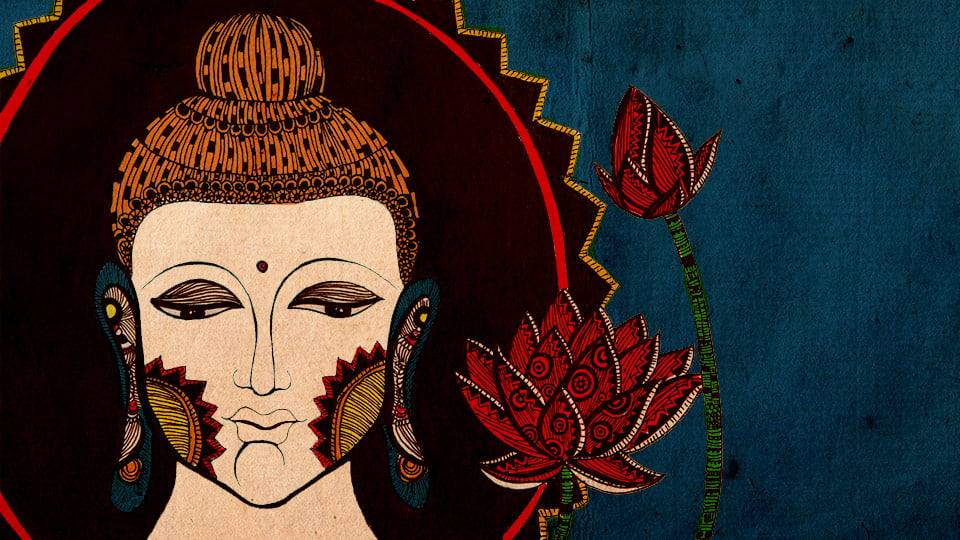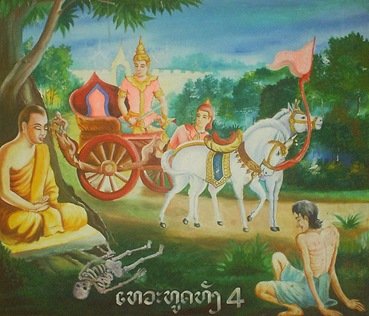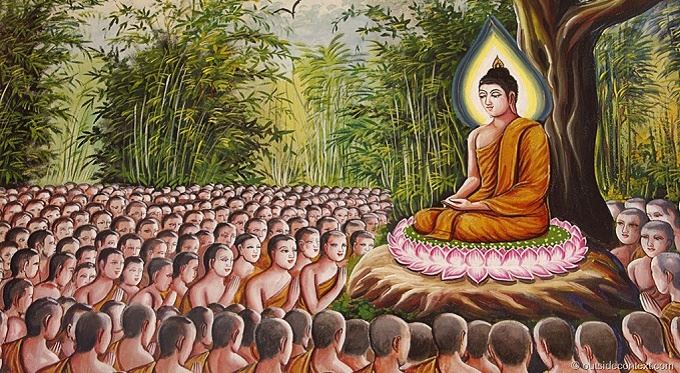Buddha Purnima: A Lesson For Young India To Find A New Meaning

Buddha, the name which conjures a myriad images in my mind’s eye; floated in, unannounced today morning, with the arrival of the printed newspaper after a long time, that announced Buddha Purnima. The full moon arose in its iridescent luminosity in my vision, symbolising this day when Siddhartha Gautama was born in 563BCE at Lumbini, Nepal; achieved Nirvana under the Bodhi Tree at Bodh Gaya, Bihar, at age 35, emerging as Buddha, the ‘enlightened one’; entering the state of Mahaparinirvana (free from the cycles of rebirth) in 483 BCE at Kushinagar, North India, aged 80; only to resurrect as the ninth and most recent incarnation of Vishnu, in the pantheon of Hindu Avatars.
As Sadguru Jaggi Vasudeva puts it so succinctly, “So there have been many, but this incredible human being, in many ways has changed the face of this planet and still continues to do so. 2500 years is not a small amount of time.”
However, in the present times of uncertainty and flux, it will only be pertinent to fathom if we could align the name of Buddha as a ‘Role Model’ of sorts to a young India where more than 50% of its population are below the age of 25 and more than 65% below the age of 35; and recall some lessons from Buddha’s road to ‘realisation’ and imbibe them into our lives.
Lessons from Buddha’s early journeys
Buddha’s early life is akin to the Eliotian quote, “In my end is my beginning”, that interpretably symbolised the circularity and the spiritual journey one can subject to in one’s life. Relate it to the first lesson that an inquisitive Siddhartha Gautam garnered from the Four Sights that beset him when he left the sheltered existence of luxury and pleasure in the precincts of his king -father’s palace for the first time at the age of 29:
Sequentially in his journey he first saw an old man, revealing the consequences of aging that affects all beings alike; followed by the sight of a sick person suffering from a disease signifying that all beings are subject to disease and pain. The third sight of a dead body implied to him that death is an inevitable fate that befalls everyone and that sufferings have to be endured in life. The three negative sights were followed by the fourth sight of an ascetic who had resolved to find the cause of human suffering; a sight that gave him the hope that he too might be released from the sufferings arising from being repeatedly reborn, and he resolved to follow the ascetic’s example.
These experiences were revelations to him that he further ventured to exploit and took to a path of penance and suffering; until after 4 years of emaciating experience he realized that what he is seeking externally by identifying with those Four Sights is after all within himself. When he realized this, he endeavored to pull himself to sit down under the now famous Bodhi tree; with the determination, “Either death draws or I get up as an Enlightened Being!” The long, hard hours of meditation and contemplation, coupled with his determined ‘Sadhana’ (spiritual practice) , after seven years of leaving his palace, he entered the state of Mahaparinirvana.
It is the concept of ‘Sadhana’, exemplified by Buddha, that should confront our young minds in our early quest for our own spiritual journeys; albeit, a journey of any sort that seeks to find a new meaning in our lives.
“On this day, Gautama the Buddha became fully enlightened. Let this be a reminder that if you have the necessary focus, enlightenment is a living Possibility” – Sadguru Jaggi Vasudev.

Buddha as a Role Model
A role model is a person we look up to, in our quest to learn, a role model is someone who inspires others to imitate and emulate. Role models are the fillips we return to when we are confronted and confounded with the Hamletian soliloquy of ‘To be or not to be’ situation.
Can Buddha take that place in our minds and in our beings? Perhaps, he is much larger than life to have been thought of as an ideal possibility, what with life having gone digital, more visual, impromptu and uncertain and the dictum “easier done than harder thought”!
The possibilities that Buddha presents us are immense, multi-dimensional, soft and non-confrontational, balmy and empowering. To any discerning young person, with a vision for the future, it should become very apparent that Siddhartha to begin with, with his sense of sacrifice, small wants and an immense belief in one’s own abilities; is an exemplar of all that makes one a Role Model, albeit a Hero. As life progresses, the lessons of living and pursuance of the truth by Buddha should help any human being to put on wings to one’s thoughts, believes and passions.
 The Buddha sharing what he learned
The Buddha sharing what he learned
Buddha said:
“Do not dwell in the past, do not dream of the future, concentrate the mind on the present moment.”
“No one saves us but ourselves.”
“Ardently do today what must be done. Who knows? Tomorrow, Death comes.”
“You yourself, as much as anybody in the entire Universe, deserve your love and affection.”
“Peace comes from within. Do not seek it without.”
“Purity or impurity depends on oneself.”
Some Recommended books for the Young Reader
There are innumerable books and well-known stories on the life of Buddha: from his renunciation of a princely life, through the various stages of his spiritual journey leading to the founding of Buddhism as a religion. Some of the recommended books for the young to easily grasp the enormity of Buddha’s life, in simple terms are:
- The Imitation of Buddha by Ernest M Bowden, Blue Jay Books, New Delhi
- Old Path White Clouds by Thich Nhat Hanh, Full Circle, New Delhi
- The Dhammapada, edited by S Radhakrishnan, OUP, New Delhi
- The Art of Happiness by The Dalai Lama, Harper Paperbacks, New Delhi
- Our Appointment with life: The Buddha’s Teaching on Living in the Presentby Thich Nhat Hanh, Full Circle, New Delhi
Let us rise and resolve to a new vision, on this auspicious day, with Buddha in our Hearts.

Comments are closed.